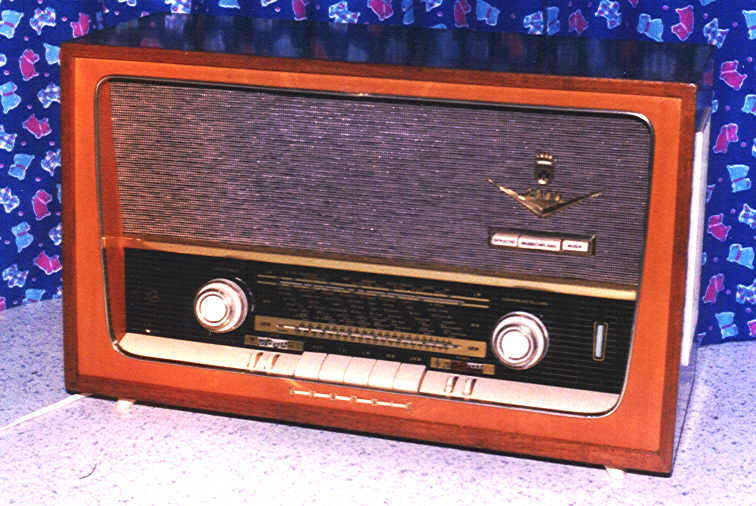
20
Item nr.

| Production | Germany, 1958.
Price was fl 329. |
|---|---|
| Bands | LW, MW, FM. |
| Tubes | ECC85, ECH81, EF89, EABC80, EL84, EM84. |
| Semi- conductors | selenium rect. |
| Cabinet | Wood. |
| Power | AC. |
| Documents | Advertisement calendar 1958/59. |
The tubes used in this radio were standard during several years. The early days of FM had seen experiments with EC92 or EF80 in the tuner section, but starting from circa 1956 the ECC85 was used for this purpose. This tube remained in use until the end of the tube era, around 1970. The ECH81 is the AM converter (and FM first IF stage) and was used for this purpose from its introduction in 1952 and also until the end of the tube era. The EF89 is IF stage (Intermediate Frequency) for both FM and AM reception. In the fifties the combined tube EABC80 was used for detection, AM and FM, and the first audio amplification stage. (Later this combination would disappear, FM detection would be by semiconductors, AM detection in the IF tube, and AF amplification combined with the output tube.) The output tube EL84 was popular until about 1960, when combined triode-pentode tubes like the ECL82 came into use. The German radios usually used semiconductor rectifiers in the power supply, while Philips kept using tubes for this purpose until about 1965.
| Obtained | 4/1995 from Flea Market. |
|---|---|
| Condition | 7. |
| Disposed | Sold 10/1996. |